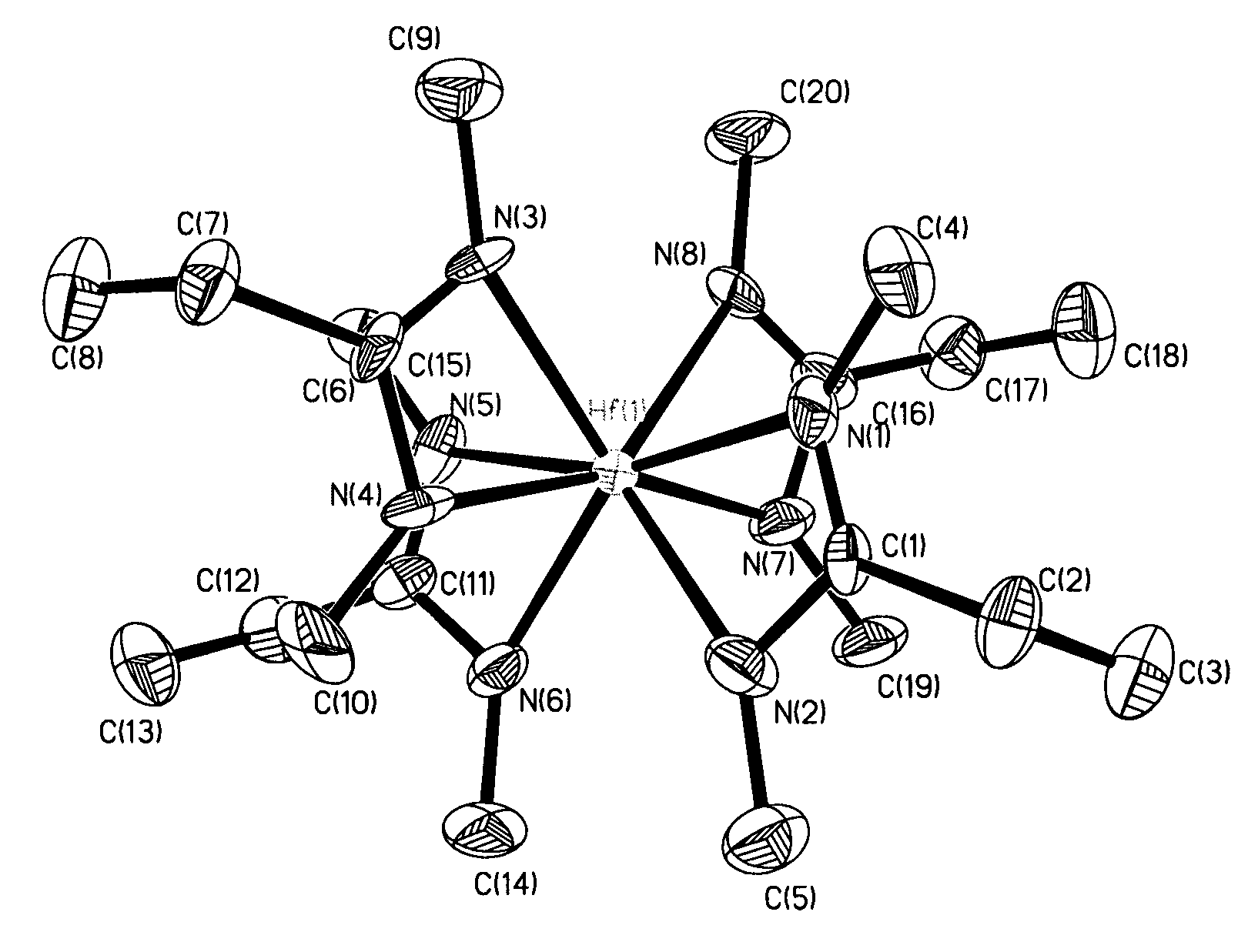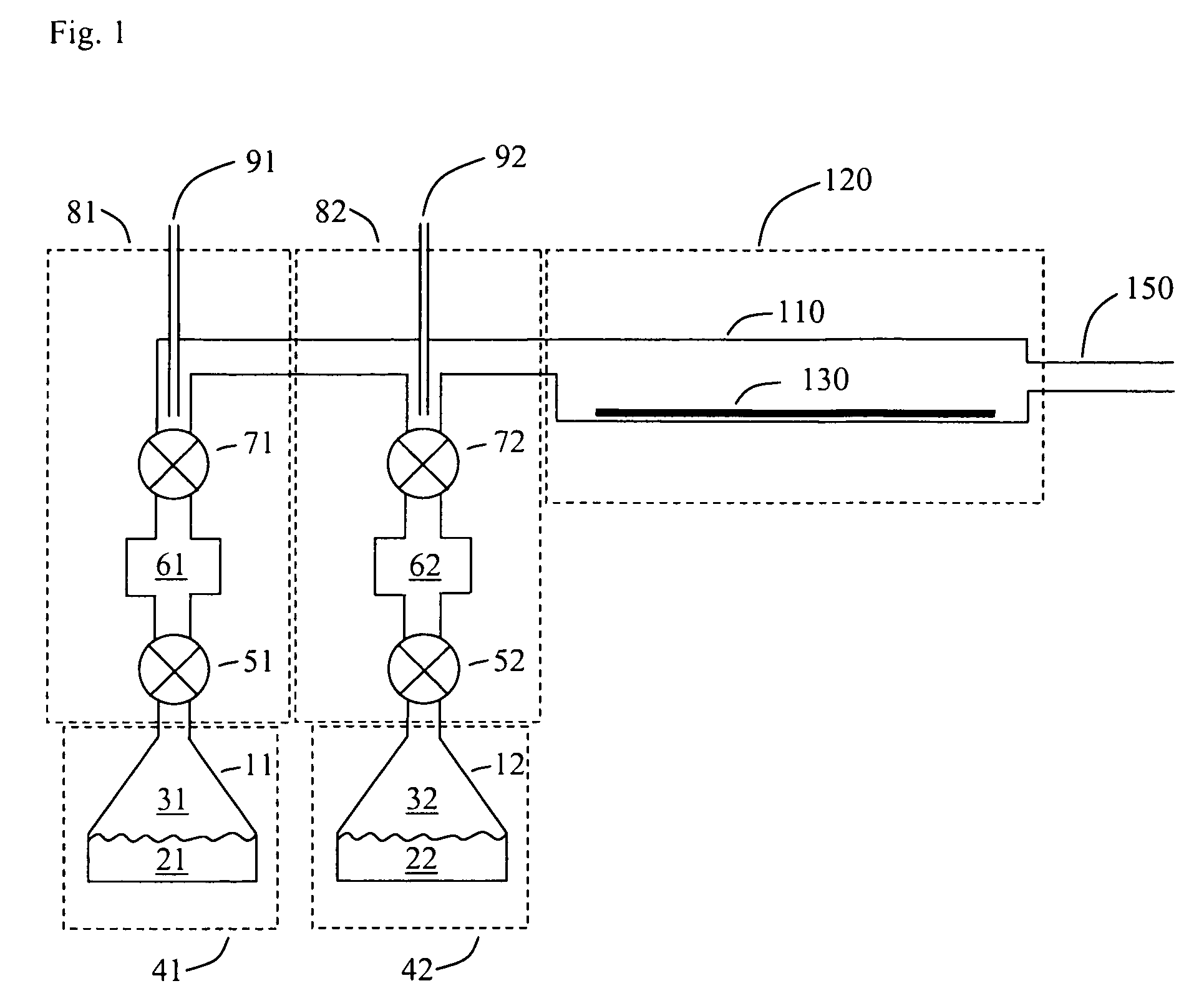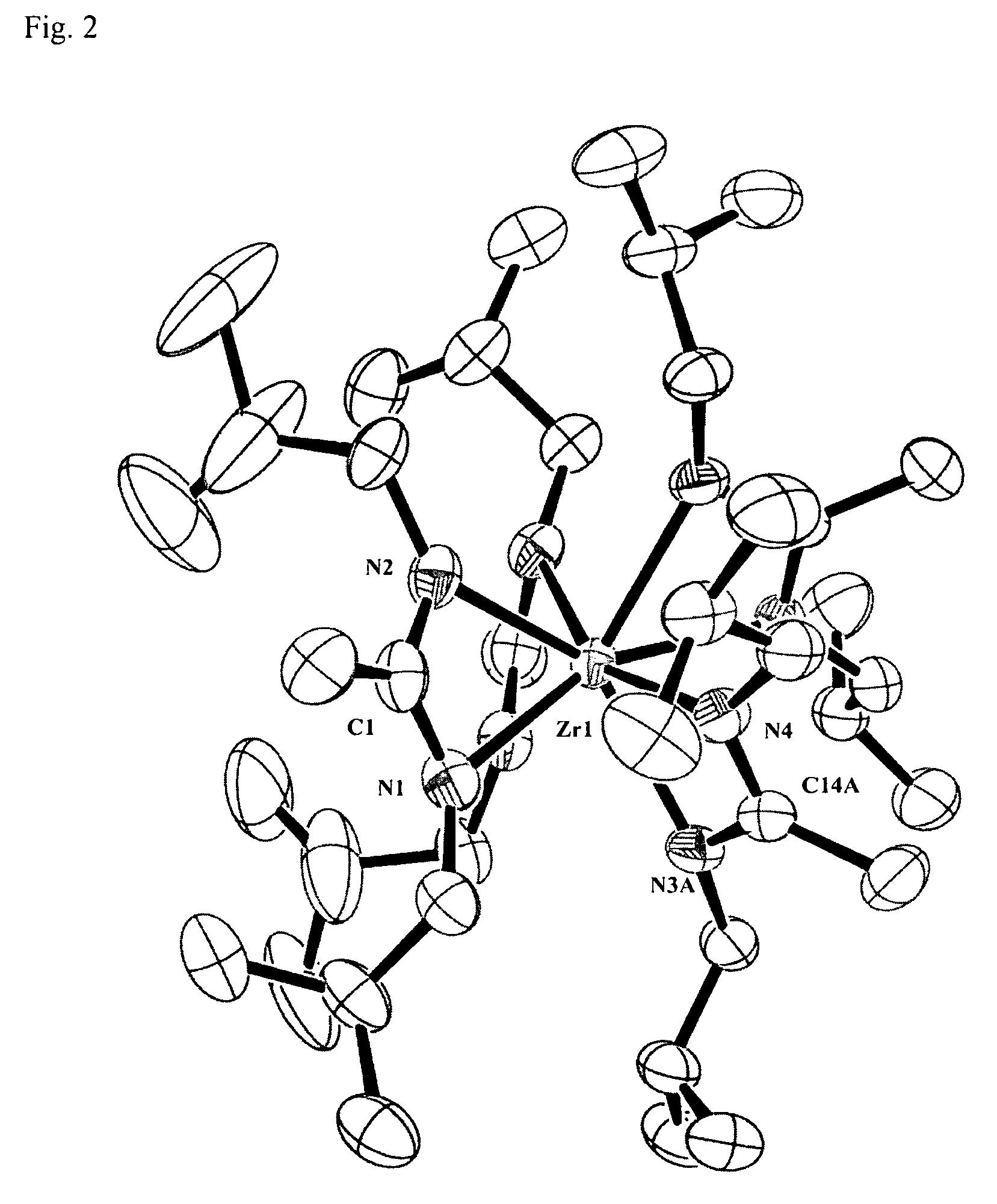Metal (IV) tetra-amidinate compounds and their use in vapor deposition
a technology of tetraamidinate and tetraamidinate, which is applied in the direction of group 3/13 element organic compounds, group 5/15 element organic compounds, organic chemistry, etc., can solve the problems of difficult identification of compounds that meet all of these challenging requirements, less uniform deposition inside narrow holes, and less than optimal thermal stability of alkoxides and dialkylamides
- Summary
- Abstract
- Description
- Claims
- Application Information
AI Technical Summary
Benefits of technology
Problems solved by technology
Method used
Image
Examples
example 1
Synthesis of N,N′-di-iso-butylacetamidine
[0045]A solution of iso-butylamine (7.3 g, 0.1 mol), acetonitrile (4.1 g, 0.1 mol) and lanthanum triflate, La(CF3SO3)3, (1.2 g, 0.002 mol) was refluxed for 30 hr under nitrogen atmosphere. The unreacted starting material and byproduct 2,4,6-trimethyl-1,3,5-triazine were removed by fractional distillation at 40° C. at around 0.2 Torr. Then the colorless N,N′-di-iso-butylacetamidine was distilled at 95° C. and 0.06 torr. Further purification was done by a second distillation. Yield: 6.4 g (75% based on iso-butylamine). 1H NMR (benzene-d6+a small amount of CD3OD, ppm): 3.1 (d, 4, NCH2), 1.9 (m, 2, CH(CH3)2), 1.7 (s, 3, CCH3), 1.0 (d, 12, CH(CH3)2).
example 2
Synthesis of tetrakis(N,N′-di-iso-butylacetamidinato)zirconium(IV), Zr(iBu-AMD)4
[0046]0.8 g (3 mmol) of tetrakis(dimethylamido)zirconium(IV), Zr(NMe2)4, was dissolved in 10 ml of toluene and then cooled to −30° C. for 30 minutes. To this solution was added 2.3 g (13.5 mmol) N,N′-di-iso-butylacetamidine, iBu-AMD, and the mixture was heated at 90° C. overnight (ligand exchange reaction). After cooling to −30° C., a colorless crystalline material precipitated and was filtered out. Yield: 1.85 g (80%).1H NMR (benzene-d6, ppm): 3.10 (d, 16, J=6.9 Hz, NCH2), 1.89 (m, 8, CH(CH3)2), 1.71 (s, 12, CCH3), 1.00 (d, 48, J=6.6 Hz, d, CH(CH3)2). 13C NMR (benzene-d6, ppm): 174 (CCH3), 55.76 (NCH2), 31.74 (CH(CH3)2), 21.134 (CH(CH3)2, 12.10 (CCH3). Anal. Calcd. for C40H84N8Zr: C, 62.53; H, 11.02; N, 14.58. Found: C, 62.76; H, 11.25; N, 14.50.
[0047]X-ray crystallography was used to determine the molecular structure of tetrakis(N,N′-di-iso-butylacetamidinato)zirconium(IV) shown in FIG. 2, where the a...
example 3
Synthesis of tetrakis(N,N′-di-iso-butylacetamidinato)hafnium(IV), Hf(iBu-AMD)4
[0049]This compound was prepared in a way similar to that described in Example 2 for Zr(iBu-AMD)4, starting from 3 mmol of tetrakis(dimethylamido)hafnium(IV), Hf(NMe2)4. The product was isolated as a white powder. Yield: 2.17 g (85%). 1H NMR (benzene-d6, ppm): 3.15 (d, 16, J=7.2 Hz, NCH2), 1.87 (m, 8, CH(CH3)2), 1.70 (s, 12, CCH3), 0.99 (d, 48, J=6.8 Hz, CH(CH3)2). Anal. Calcd. for C40H84HfN8: C, 56.15; H, 9.90; N, 13.10. Found: 55.85; H, 9.77; N, 13.30.
[0050]The TG properties of this hafnium complex are similar to those of the zirconium complex described in Example 2.
PUM
| Property | Measurement | Unit |
|---|---|---|
| temperature | aaaaa | aaaaa |
| temperature | aaaaa | aaaaa |
| vaporization temperatures | aaaaa | aaaaa |
Abstract
Description
Claims
Application Information
 Login to View More
Login to View More - R&D
- Intellectual Property
- Life Sciences
- Materials
- Tech Scout
- Unparalleled Data Quality
- Higher Quality Content
- 60% Fewer Hallucinations
Browse by: Latest US Patents, China's latest patents, Technical Efficacy Thesaurus, Application Domain, Technology Topic, Popular Technical Reports.
© 2025 PatSnap. All rights reserved.Legal|Privacy policy|Modern Slavery Act Transparency Statement|Sitemap|About US| Contact US: help@patsnap.com



